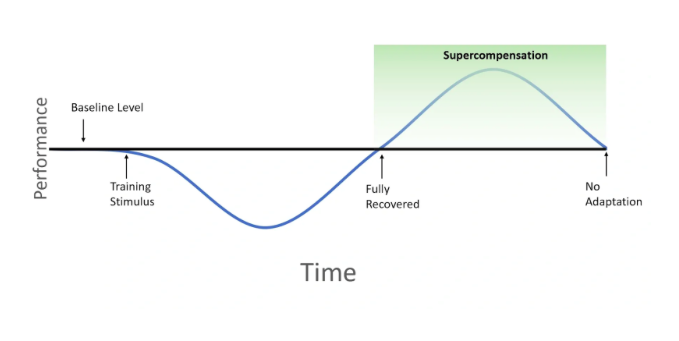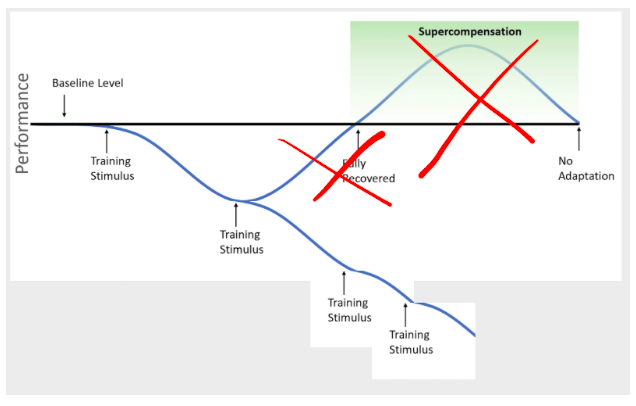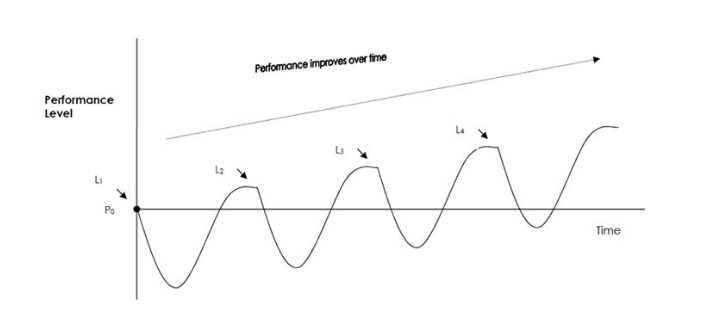|
Consider: What is training? Your first thought is probably that training is the act of working out, probably repeatedly. Maybe it’s taking a 30 minute break from your job to do a core circuit, or maybe it’s going on a 16 mile run on Saturdays. Maybe it’s rowing for 2 hours three times a week, or maybe it’s rowing for 12 sessions a week as you try to make the national team. What is a training plan? Chances are, it makes you think of some sort of cycle or calendar, with workouts of varying intensity and duration spread throughout. And depending on how serious or experienced of an athlete you are, the more workouts you’ll have and the harder they’ll be. Seemingly, a training plan is just a list of workouts arranged throughout the week (or month, or day, or year). Alas, this conception of training and training plans is incomplete. A fuller picture of training needs to consider a number of factors, including nutrition, hydration, injury prevention, and--crucially--recovery, which we’ll focus on here. So let’s be clear: A hard workout will never make you faster on its own. Working out doesn’t improve your performance; recovery after a workout does. Adaptation to a physiological stressor occurs while you are in recovery. Quite literally: you become a faster rower during the periods of time when you are NOT working hard! If you want to engage in a well-rounded, effective training program, the recovery period is equally as important as the exercise stimulus. Let’s walk through the graph above: 1. Baseline Level This is pretty obvious. It’s basically how fast of a rower you are right now, prior to a workout. 2. Training Stimulus This is the workout itself. You stress your body in some way. Maybe it’s crazy hard sprint pieces; maybe it’s a long, light steady state piece. You tax the various energy systems in your body and the immediate effect is to actually get slower. 3. Recovery Period This is where the magic happens. This is when your performance sinks below your baseline level for an extended period of time; the entire time when the curve dips below the horizontal line in the graph. If you do 12x500m on the erg, and 12 hours later I ask you to pull a 2k--you probably won’t PR, because your body will not have fully recovered. During this time, your body undergoes a number of physiological adaptations as it replenishes your energy stores, repairs muscle and tissue tears from the workout, and improvements at the cellular level (i.e. increasing the density of mitochondria). Fundamentally, this is the period during which your body is actually adapting and improving. If you don’t let yourself properly recover from a workout, you’ll never get faster. 4. Supercompensation At a certain point, your performance level continues to creep up and up, until you’ve surpassed the initial baseline level. Congratulations--your body is now in supercompensation! You’re officially a faster rower than you were before the last workout. This is the best time for you to apply another training stimulus and repeat the process all over again. Performance Over Time If you don’t allow for proper recovery, your performance over time could look something like this (exaggerated) graph. Your performance level continues to sink, and in spite of numerous hard workouts, you are only getting slower! Bummer. With a properly executed training program, you can recover properly between workouts. Then, when your body is in the supercompensation period, your current performance level is higher than the baseline level. If you apply a training stimulus now, you will undergo another recovery period and come out the other side even faster! Keeping Track of Recovery
How do you use this information to be a better rower? Well, it’s important to keep track of your recovery process with a training journal. This will help you notice patterns in your recovery that can inform important decisions in your training. For instance, you may notice that anytime you do a good hard Anaerobic Threshold workout, the next day’s session is always subpar, no matter what it is. This is an indication that your body might need two days to recover properly, and the day after AT would be a good chance for a light session, or no session at all. It’s also a good idea to keep track of stressors outside of rowing, since those can play an important role in recovery. Record how much sleep you get. Make a note of how much you have going on at work or school. Consider repeated, stressful social situations. A busy week at work might be a good opportunity to have a lighter week of training, since your body might be less able to recover quickly. But without a training journal where you can keep track of your workouts and the factors that impact your recovery, you won’t be able to notice these patterns. Keeping a Recovery Journal In addition to keeping track of your workouts, try adding in some extra information. Here are a few basic questions to get you started. If you rank each question 1-10, then you can formulate a “recovery score” for yourself. You don’t have to answer these questions every single day--just once a week will be enough to start noticing patterns. This is also not an exhaustive list of stressors that can impact your recovery, but try it out and see if it helps give you a more complete picture of your training. How many hours of quality sleep do you get each night? How well have you been hydrating every day? How well have you been fueling with proper nutrition? Do you have adequate downtime during the week to relax? How much emotional stress have you experienced this week? How busy are you with work/family/school? Conclusion While it’s easy to get caught up in the workouts, a complete training program has to consider recovery as an essential component to improving over time. Adding more and more, harder and harder workouts will not necessarily improve your performance. Physiological, psychological, and technical adaptation actually occurs during the recovery period after the stress of a workout, so without adequate recovery, additional sessions won’t yield additional speed. Fundamentally, recovery is as important to training as the workout itself. Comments are closed.
|
Archives
April 2023
Categories
|
|
Sammamish Rowing Association
5022 W. Lake Sammamish Pkwy NE Redmond, WA 98052 [email protected] 425-653-2583 |
Mailing Address:
Sammamish Rowing Association P.O. Box 3309 Redmond, WA 98073 |
|





